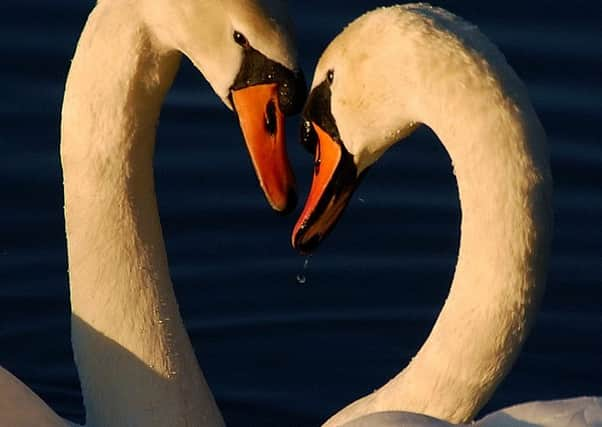Today's columnist, Claire Hanley-Opik: Look at those two lovebirds


Many bird species are starting to think about the opposite sex and you might be able to spot their courting rituals around the city.
Spring isn’t quite here, but there are signs it is on the way.
Advertisement
Hide AdAdvertisement
Hide AdSnowdrops are flowering and catkins are making an appearance.
The days are getting noticeably longer now, and as the sun rises you can hear the dawn chorus being sung with more gusto.
As it’s been so mild recently, you may have already seen the robin starting his courtship ritual.
He collects food and feeds the female, much like feeding a chick.
Advertisement
Hide AdAdvertisement
Hide AdMating itself (known as treading) is however, over so quickly is it considered a lucky charm to have seen it!
If (as is quite likely) you blinked and missed it, console yourself by taking a walk through Moss Valley Woodlands and listening for the distinctive sound of great spotted woodpeckers drumming.
Both male and female birds do this, so you have twice as much chance as you did with the robin!
Blue tits and great tits are some of the first garden birds to build their homes in anticipation of having chicks to raise.
Advertisement
Hide AdAdvertisement
Hide AdYou can often see them in gardens and parks collecting nesting materials.
You can encourage them to visit your garden by putting up a nest box and leaving suitable materials out for them.
Hair, scraps of wool cut into short lengths, and pieces of plant material will all be welcome and encourage them into your garden.
Leaving food and water out for birds can make a real difference to their survival all year round.
Advertisement
Hide AdAdvertisement
Hide AdKitchen scraps, seeds, nuts and berries are all good for them.
Raw peanuts in particular are good for attracting brightly coloured blue tits and greenfinches, as well as nuthatches and sparrows.
If you have space in your garden, consider planting some native species with berries and seed heads –these are good for all sorts of wildlife. Hawthorn, teasels, and dog roses are good examples.
Some birds mate for life; species include bullfinches, jackdaws, great crested grebes and the house sparrow.
Advertisement
Hide AdAdvertisement
Hide AdProbably the most well known of our native birds that does this is the mute swan.
Their graceful courtship ritual sees them face each other and bow, and if you’re at the right angle, forming the shape of a love heart.
They are often seen on Blackburn Meadows nature reserve, so that might be a good place for a romantic walk this weekend.
Show your love for wildlife by joining us.
See Sheffield & Rotherham Wildlife Trust or call 0114 2634335 for more details.
* Claire Hanley-Öpik, Sheffield & Rotherham Wildlife Trust